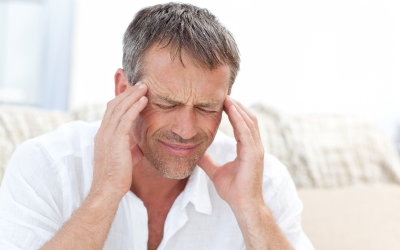What Differentiates A Migraine From A Headache?
The cause of migraines is unknown but the symptoms can be very debilitating – those suffering with a migraine will experience a throbbing, intense headache, far worse than the mild headache we all experience from time to time. During an attack, the blood vessels in the brain dilate and draw together with stimulation from the nerve endings near the affected blood vessels. Researchers agree that these changes to the blood vessels are probably what causes the pain, though they don’t have a full understanding of how a migraine works or what brings them on. Those who suffer with migraines tend to do so because of a predisposition for the condition in their family but, again, it is not fully understood what role genetics play in the development and risk of migraines. Around 20 percent of females and 6 percent of males suffer with migraines, making it a fairly common condition. It’s rare for people to develop them in later life though, as 90 percent of sufferers have their first attack before they’re 40 years old. Researchers suggest hormones are connected to migraines, as many women often find they start getting them around puberty. Most believe that certain foods make the problem worse, so it may be worth avoiding cheese, chocolate, wine and citrus fruits – these can cause an attack. Furthermore, emotional triggers can be worth trying to avoid where possible, such as anxiety, and stress. The contraceptive pill, travel, bright lights and exercise are all connected to migraines according to sufferers.
People often refer to a regular headache as a migraine, but there are differences that set these two ailments apart. The ‘classical’ migraine has a variety of specific features, including headaches which affect one side of the head at a time, regular headaches which occur in bouts of roughly four to 72 hours, nausea and vomiting, preceding symptoms such as flashing lights and a blurred vision, and sensitivity symptoms such as sensitivity to light and sound, and a tingling sensation in the body. In rare cases, people with migraines experience a transient loss of the power of a limb, or temporary difficulty with speech, but this is not commonly associated with migraines. The initial diagnosis requires great care, as the first attack of a migraine can look like other serious concerns, such as meningitis or a stroke. However, once several attacks have occurred it makes it easier to spot patterns that can determine whether or not the individual is suffering with a migraine problem.
Many women find that the oral contraceptive pill makes attacks worse, and if this is the case then this should be stopped. The best solution when you’re suffering with a migraine is to rest in a quiet, dark room – bright lights can make it worse. You’re best treating a migraine as soon as it starts, as the treatment becomes less effective the longer you’ve had it. The treatment varies depending on your age and the severity of your problem, so you should speak to your GP before buying over the counter remedies if possible. However, simple painkillers can be effective in relieving the symptoms – they’re usually the first form of treatment tried, so may be worth trying if you’re suffering with the symptoms. Some people find that homeopathy helps, including acupuncture. It may be worth speaking to your GP anyway though, in order to ascertain if this is the best course of treatment and also to see if there are any other changes you can make to lower your risk of having an attack.


Comments are closed.